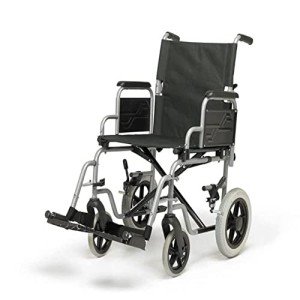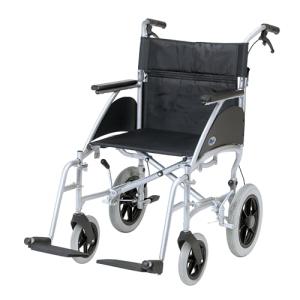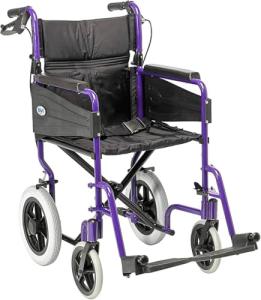The demand for mobility aids has surged in recent years, particularly as the global population ages. Among the many options available, lightweight folding wheelchairs with attendant brakes and straps have garnered considerable attention. These innovative products are designed to enhance mobility for users while providing a host of safety features for caregivers. This guide delves into the significance, benefits, and considerations associated with these specialized wheelchairs.
Understanding Lightweight Folding Wheelchairs
Lightweight folding wheelchairs are specially designed to combine functionality, portability, and ease of use. Constructed from durable materials like aluminum or titanium, these wheelchairs are notably lighter than traditional models, making them easier to lift and transport. The foldable design allows them to be conveniently stowed away in vehicles or small living spaces, which is particularly beneficial for those who travel frequently.
Key Features of Lightweight Folding Wheelchairs
- Weight: Typically weighing between 15 and 30 pounds, lightweight wheelchairs are easier for both users and attendants to manage.
- Folding Mechanism: They boast a compact folding mechanism that enables easy storage and transport.
- Customizable Options: These wheelchairs often come with adjustable seating widths and heights to cater to individual user needs.
- Attendant Brakes: One of the standout features is the inclusion of attendant brakes, allowing caregivers to safely control the wheelchair’s movements, especially on slopes or uneven surfaces.
- Safety Straps: Straps help ensure the user remains secure in the wheelchair, providing an extra layer of safety during transport.
Importance of Attendant Brakes
Attendant brakes are a valuable feature in lightweight folding wheelchairs, particularly for caregivers. They offer several advantages:
- Enhanced Control: Caregivers can easily slow down or stop the wheelchair, ensuring safety on inclines or declines.
- Improved Stability: The ability to lock the wheels in place can provide stability while transferring users in and out of the wheelchair.
- Increased Confidence: Knowing that they have control of the wheelchair allows caregivers to assist users more confidently.
The Role of Safety Straps
Safety straps in wheelchairs serve a vital function, especially for individuals who may have limited mobility or balance issues. The benefits of these straps include:
- Prevention of Falls: Straps can help secure individuals who might otherwise shift or slide out of the chair during movement.
- Comfort and Security: Users often feel more secure and comfortable when they know they are safely restrained within the chair.
- Assured Transport: When moving users, caregivers can be more assured of their safety, reducing anxiety for both parties.
Benefits of Lightweight Folding Wheelchairs with Attendant Brakes and Straps
The integration of both attendant brakes and safety straps within lightweight folding wheelchairs caters to a broad range of user needs. Here are some compelling benefits:
- Portability: Their lightweight design makes them easy to transport.
- User Independence: The adaptability of the wheelchair allows users to maintain a level of independence while still having caregiver support.
- Increased Safety: The features of attendant brakes and straps significantly enhance safety for users and caregivers alike.
- Versatile Applications: Suitable for various environments—from home use to outdoor adventures—these wheelchairs offer flexibility for users and caregivers.
- Cost-Effectiveness: Investing in a quality wheelchair can lead to long-term savings by reducing the need for other assistive devices.
Factors to Consider When Choosing a Lightweight Folding Wheelchair
Whether purchasing for yourself or someone else, several factors must be carefully considered to ensure that the selected wheelchair meets user needs:
- Weight Capacity: Understand and adhere to the weight limits of the wheelchair.
- Dimensions: Measure the user to determine the appropriate seat width and depth.
- Braking Mechanism: Ensure the attendant brakes are user-friendly for the caregiver.
- Comfort Features: Look for padded seats and adjustable footrests for maximum comfort.
- Durability: Assess the materials used; a quality wheelchair should be both lightweight and strong.
Frequently Asked Questions (FAQs)
1. Who benefits most from a lightweight folding wheelchair with attendant brakes and straps?
These wheelchairs are particularly beneficial for elderly individuals, those recovering from surgery, or anyone with limited mobility. They provide both independence for the user and safety features for attendants.
2. How much do lightweight folding wheelchairs typically cost?
Prices can vary significantly based on brand, materials, and features. Generally, they can range from £150 to £600, with high-end models costing more.
3. Are there maintenance tips for these wheelchairs?
Yes, regular maintenance is crucial. Here are some tips:
- Check the brakes regularly for proper function.
- Inspect wheels and bearings for wear and tear.
- Clean the frame and seat fabric with appropriate cleaning solutions.
- Ensure that all moving parts are lubricated as needed.
4. Can lightweight folding wheelchairs accommodate all terrains?
While they are designed for various surfaces, users should consider the terrain they frequent. Some models may be better suited for smooth surfaces, while others are equipped for rougher terrain.
5. How do you fold and unfold a lightweight wheelchair?
Folding and unfolding mechanisms can vary by model, but most wheelchairs have a simple lever or knob that allows for quick and easy folding. Always refer to the manufacturer’s user manual for specific instructions.
Lightweight folding wheelchairs with attendant brakes and straps represent a significant advancement in mobility solutions. With their unique blend of portability, safety, and durability, they cater to a diverse population needing assistance. As the importance of mobility aids continues to grow, these innovative wheelchairs stand out as reliable options for enhancing independence and safety for users and caregivers alike. By understanding and considering the many features and benefits available, individuals can make informed decisions when selecting the right wheelchair, ultimately improving the quality of life for users and their supporters.







